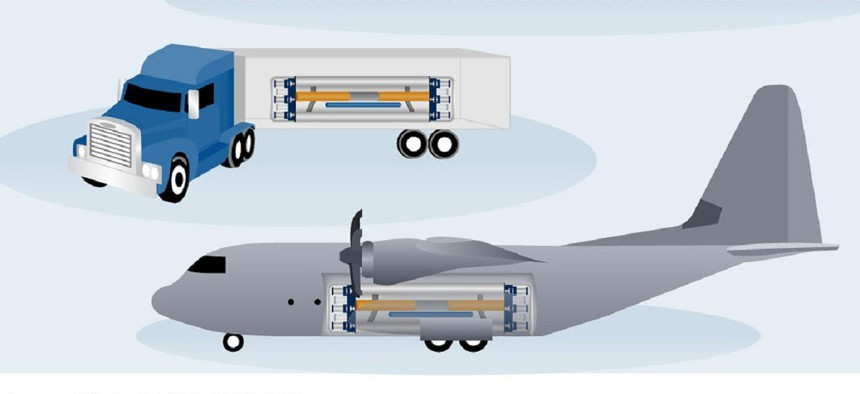Pentagon’s ‘Mobile’ Nuclear Microreactor Will be Demonstrated at Idaho National Lab

Government Accountability Office
The potential, modern energy source could help power operations in austere environments down the line.
The Defense Department is set to prototype a mobile microreactor and ultimately demonstrate that small nuclear device at the Energy Department’s Idaho National Laboratory.
In a record of decision regarding Project Pele issued by the Pentagon’s Strategic Capabilities Office this week, officials confirmed plans to produce an “inherently safe by design” transportable microreactor that can deliver 1 to 5 megawatts of electrical power for at least 3 years in full operation.
“Advanced nuclear power has the potential to be a strategic game-changer for the United States, both for the DOD and for the commercial sector,” Project Pele Program Manager Dr. Jeff Waksman said. “For it to be adopted, it must first be successfully demonstrated under real-world operating conditions.”
Microreactors can operate independently from the electric grid and generate roughly up to 50 megawatts of power.
Project Pele marks the first electricity-generating, fourth-generation nuclear reactor to be designed and built in the United States. Once operational, it will be a High-Temperature Gas Reactor that relies on High-Assay Low Enriched Uranium Tristructural Isotropic fuel. China’s HTR-PM was the first nuclear reactor demonstrated in the world, reaching criticality last September.
This announcement comes several years after Defense officials articulated intent to conduct an environmental analysis associated with making such a reactor, as mandated by the National Environmental Policy Act—and also launched a microreactor design competition.
With expectations to select one engineering design in the spring, DOD is considering separate competing options from BWXT Advanced Technologies LLC of Lynchburg, Virginia and X-energy LLC of Greenbelt, Maryland.
At this point, the DOD uses approximately 30 terawatt-hours—or 30 million megawatt-hours—of electricity per year, which is more than some small nations, and more than 10 million gallons of fuel per day, officials noted. Those levels will likely increase going forward, as new weapons and radars systems and the electrification of non-tactical vehicles come into fruition.
“A safe, small, transportable nuclear reactor would address this growing demand with a resilient, carbon-free energy source that would not add to the DOD’s fuel needs, while supporting mission-critical operations in remote and austere environments,” according to the Pentagon’s press release.
Still, critics weighed in ahead of the office’s decision. In the final, more-than-250-page environmental impact statement comment response document, the department acknowledged how public commenters in opposition to the proposed microreactor fabrication “identified concerns including the risks associated with accidents, waste disposal, impacts to the Snake River Aquifer and spent nuclear fuel management.”
Once the prototype is demonstrated, DOD will decide “whether or not to transition the technology and to use it operationally,” officials noted.
Beyond Energy and Defense, the Nuclear Regulatory Commission, the U.S. Army Corps of Engineers, the National Nuclear Security Administration and NASA are involved in this effort.






